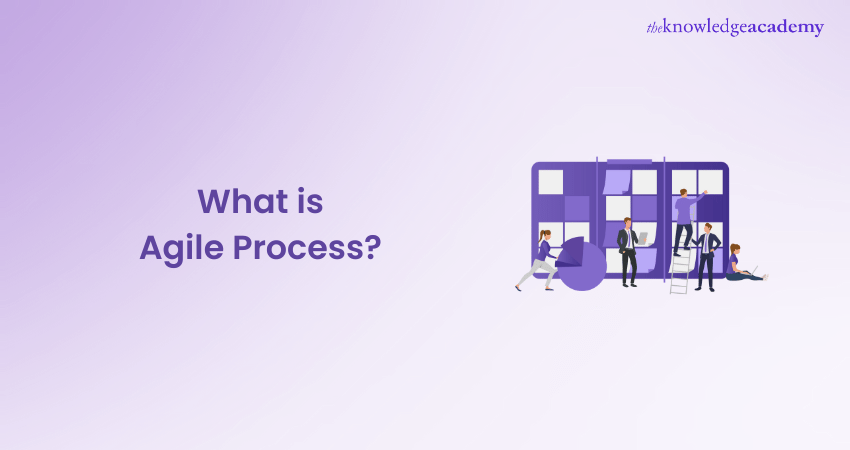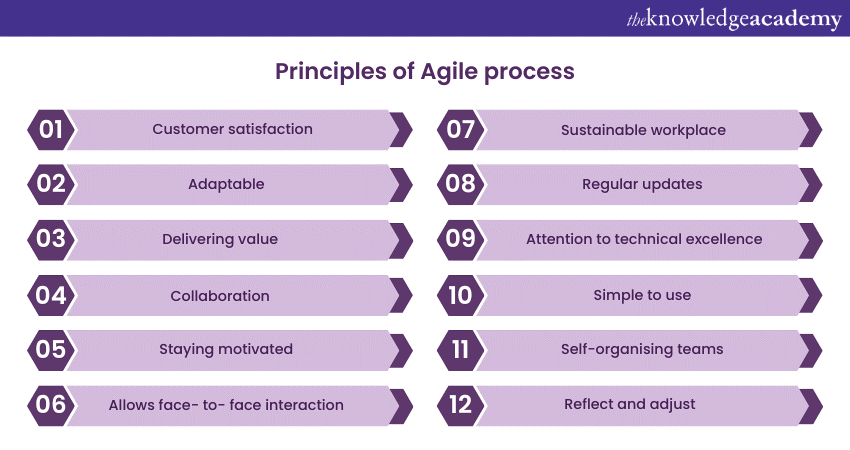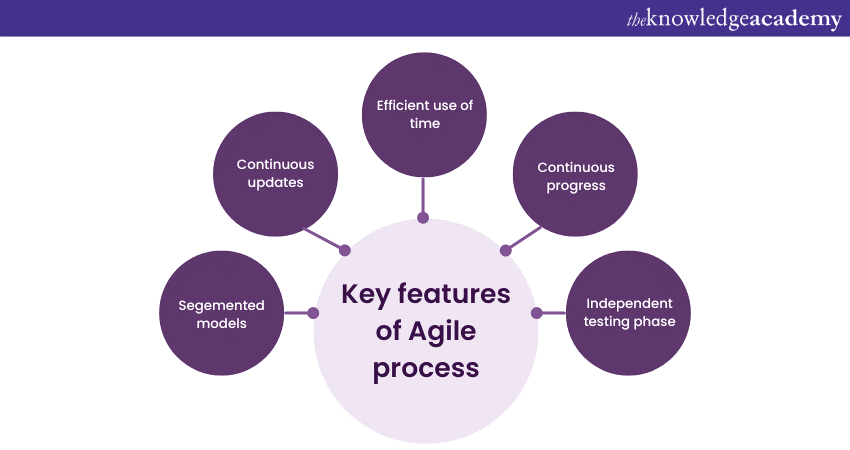We may not have the course you’re looking for. If you enquire or give us a call on 01344203999 and speak to our training experts, we may still be able to help with your training requirements.
Training Outcomes Within Your Budget!
We ensure quality, budget-alignment, and timely delivery by our expert instructors.

Agile methodology refers to a technique that focuses on the quick iteration of code and testing across the whole software development life. In contrast to the Waterfall methodology, which divides the process of developing and testing software into two phases, the Agile model views these two stages as interdependent iterations simultaneously.
According to agilesherpas.com, 44% of marketers feel that Agile is extremely important for their organisations. They have considerably raised success rates in software development over the last 25 to 30 years. They have also improved quality and speed to market and They have boosted the motivation and productivity of IT teams. These improvements have been made possible by their use of these technologies. The following blog will guide you through the intricacies surrounding “Agile Process”, so stay tuned.
Table of Contents
1) Let's discuss What is Agile Process
2) Why Choose Agile
3) 12 principles of Agile Process
4) Some key features of the Agile Process
5) A complete overview of the Agile methodologies
6) Knowing the advantages of the Agile Process
7) Agile Software Development
8) What do we mean when we say Agile Manifesto?
9) What are the types of Agile methodologies?
10) Why is the Agile Manifesto considered important?
11) Tips for using the Agile Manifesto
12) Conclusion
Let's discuss What is Agile Process
Agile Process refers to a set of practices that encourages the continual iteration of development and testing throughout the lifespan of the Software Development project. A project may be more easily managed if it is first segmented into several distinct stages. It requires ongoing communication, coordination with the many stakeholders, and continual development at each level.
As soon as they get started, teams immediately go into a process that involves planning, carrying out, and reviewing their work. In contrast to the Waterfall paradigm, used in software testing, the Agile methodology allows software creation and testing to occur simultaneously.

Why Choose Agile
Agile can be chosen as a reliable methodology due to these factors:
1) It is flexible: Any new incorporation can be done quite easily and effectively. Agile allows teams to adapt to these changes so that there is seamless collaboration amongst all team members.
2) It helps in providing customer satisfaction: Agile allows the users to see how their product is functioning faster. It also helps in delivering products or services on time.
3) Improves product quality: With Agile, there is continuous improvement of products and services. It also helps in identifying the products promptly which helps in providing easy solutions to the users.
4) Risks are reduced: Agile helps in breaking different segments of the projects into sprints. These sprints reduce challenges faced by the team and prevents the errors from reoccurring in the end.
5) It allows for continuous feedback: The regular feedback loops makes sure that the product aligns with the users’ needs and expectations. Therefore, it reduces the chance of any errors popping up towards the end.
Be a successful Agile Project Manager with our Agile Project Management Practitioner Course!
12 principles of Agile Process
In this section you are going to learn the 12 principles of Agile Process. These principles are:

1) Customer satisfaction: When customers see all the changes and improvements in the products, they feel valued. They also receive updates regularly which helps them stay updated on their products or services.
2) Adaptable: In Agile, new changes and updates can easily be incorporated. They also have several processes which help the teams to collaborate and get used to the changes efficiently.
3) Deliver value: Agile helps in delivering value to the users which keeps them satisfied as they feel valued.
4) Collaboration: In Agile, collaboration is the key to developing products and providing customers with a great experience. It helps people to break projects according to their needs so, it ensures seamless collaboration and the availability of sufficient time to deliver the products or services.
5) Staying motivated: Agile is best utilised when all the memebers of the team are motivated. They stay motivated by constant and efficient communication and collaboration, which is also easily facilitated by Agile.
6) Allows face-to-face interaction: Agile understands that effective communication can be attained and that it is better to engage in face-to-face communication. With Agile you can achieve the same goal you desire.
7) Sustainable workplace: With Agile, it is possible to manage a workplace where employees can maximise their outputs without burning out.
8) Regular updates: In Agile you can simultaneously work on projects and update them regularly. These updates are stored, and the products or services are continuously improved as they move along the process.
9) Attention to technical excellence: In Agile, there can be a continuous attention to the technical aspects of the projects as well as designs. This helps in improving projects considerably.
10) Simple to use: Agile is not only simple to use, but it also follows the principle of not overcomplicating tasks or projects.
11) Self-organising teams: As mentioned before, the more organised the teams are, the better will be their productivity.
12) Reflect and adjust: Agile follows the principle of looking into your work and adjust accordingly.
Ready to ace your Agile interview? Dive into these essential Agile interview questions now!
Some key features of the Agile process
Now let's look at some of the major features of the Agile process:

1) Within software development, the Agile process is segmented into discrete models that designers work on.
2) The client is provided with early and regular chances to see the product, as well as the opportunity to make decisions and adjustments about the project.
3) Compared to the Waterfall methodology, the Agile model is considered unstructured.
4) It is possible to carry out the implementation of smaller projects rapidly. Providing an accurate time estimate for the development of huge projects is challenging.
5) It is possible to correct errors even during the project.
6) The development method is iterative, and the project is carried out in small iterations that last between two to four weeks. There is virtually little planning involved.
7) The development of software supersedes the creation of documentation.
8) Each iteration has its independent testing phase. It makes it possible to do regression testing every time new logic or functions are made available for use.
9) When an iteration of Agile testing ends, all shippable features of the product are handed over to the client. The newly released features are immediately available for use. When you have a strong relationship with your clientele, it is beneficial.
10) Both testers and developers collaborate on the project.
11) User acceptability testing is carried out after each sprint.
12) Maintaining close contact with the developers and for everyone to examine the needs and plan jointly is necessary.
A complete overview of the Agile methodologies
In this section you are learn a complete overview of the Agile methodologies. They are:
a) Core principles:
1) Iterative development: Instead of a linear path, Agile promotes cycles known as sprints, typically lasting 2-4 weeks. Each sprint aims to produce a potentially shippable product increment.
2) Customer collaboration: Agile emphasises close customer engagement and frequent feedback to ensure the product aligns with the users' needs.
3) Adaptive approach: Agile teams are primed to embrace change, adjusting project scopes based on evolving requirements, market conditions, or feedback.
b) Popular Agile frameworks:
1) Scrum: One of the most adopted frameworks, Scrum organises work into time-boxed sprints, led by a Scrum Master who oversees a collaborative team and facilitates daily stand-up meetings.
2) Kanban: Visualising workflow is Kanban's hallmark. Tasks are represented on a board, allowing teams to monitor progress and identify bottlenecks in real-time.
3) Extreme Programming (XP): This methodology prioritises engineering practices and customer satisfaction, emphasising continuous feedback and stringent quality standards.
Knowing the Advantages of the Agile Process
1) As it is an Agile Process, there will be significant contact between the project team and the customers.
2) Agile allows customers or stakeholeders interaction on ongoing projects. This helps them in getting a better understanding of their products or services.
3) The results may be accurately anticipated and, in some cases, provided even more quickly than initially anticipated.
4) All projects adhere to a strict timetable and may incur expenditures that are forecastable.
5) Agile makes it possible to adjust, which in turn makes it possible to improve and reprioritize the product catalogue.
6) The customer can pick the order in which the features are implemented, the full potential value of the project is protected.
7) The staff can contribute greater value in an uncomplicated manner after understanding the consumer's requirements.
8) In Agile Because the project is being continuously developed, tested, and collaborated in a series of smaller parts. This ensures the overall product comes out with better quality quality.
Know the advantages of Agile methodologies with our Agile IT Service Management Training.
Agile Software Development
One of the easiest and most efficient ways to transform a company's idea for a software solution into reality is via the Agile Software Development technique. Agile software development methodology emphasises iterative processes, early releases, continuous planning, learning, improvement, team cooperation, and evolutionary progress.
What do we mean when we say Agile Manifesto?
Agile Software Development is defined as set of core ideals and concepts in the "Agile Manifesto." The document, formally known as the Manifesto for Agile Software Development.Its is meant to serve as a template for groups looking to effectively embrace the principles of Agile Project Management and use them to enhance their workflow.
Existing Software Development procedures were more complicated and involved a lot of paperwork, which the Agile Manifesto's lightweight architecture was meant to improve upon. The company's original vision was to develop a more streamlined method of teamwork to speed up these operations. The Agile Manifesto, in its simplest form, offers an alternative to more established approaches to creating software.
What are the types of Agile methodologies?
There are several types of Agile methodologies. In this section you are going to learn about some of them. They are:
1) Scrum: It is the most used and popular Agile methodology. It organises work into fixed lengths of iterations called sprints. These sprints typically last two weeks. In this methodology, there are several roles like Scrum Master, Product Owner, and Development Team Members.
2) Kanban: This method emphasises on visualising the work process on a Kanban board. This board identifies bottlenecks and optimises flow. Unlike Scrum, it doesn’t have any fixed iterations and the work items are pulled from backlog.
3) Extreme Programming (XP): XP incorporates practices like pair programming, continuous integration and test-driven development so that high-quality code output is maintained.
4) Lean Software Development: This approach is inspired by Lean manufacturing principles. This optimises efficiency and delivers products or services as quickly as possible.
5) Feature-Driven Development (FDD): This methodology focuses on building systematic features and divides the project into discrete and well-defined features.
6) Dynamic Systems Development Method (DSDM): DSDM is a framework that is independent of a vendor and provides some of the best practice guidance. It can be used for on-time and in-budget delivery of projects.
7) Crystal: It focuses on principles like communication, flexibility, and simplicity. These methods and processes depend on the project size.
8) Agile Modelling (AM): This approach focuses on different modelling and documentation practices. These practices put an emphasis on flexibility and efficiency.
9) Selected Agile Framework (SAFe): SAFe provides a detailed and customisable approach to scale Agile across the organisation.
10) Disciplined Agile Delivery (DAD): It is a process framework that allows organisations to integrate different Agile and Lean approaches.
Become the best Agile Software Developer with our Agile Software Testing Training.
Why is the Agile Manifesto Considered important?
Agile Manifesto offers software development teams a flexible framework within which to steer their project management processes and maintain Agile best practices. The Agile Manifesto is a very important resource. The foundational document in Agile project management describes what constitutes success to assist teams in better aligning their objectives and organising their activities into a prioritised order.
For instance, software developers will grasp the significance of concentrating on their customers' requirements, enabling them to structure their projects according to the strategy mentioned above.
Here are some points that will help you understand the importance of the Agile Manifesto:
1)The Agile Manifesto defines core values that emphasise on customer collaboration, responsiveness to change, individual interactions, and working products.
2) By responding to customer feedback and collaborations, Agile prioritises customer satisfaction and delivers valuable software.
3) Agile emphasises on the importance of being adaptable and flexible to the market, customers and technological evolution.
4) It also helps to reshape an organisation's culture. By embracing these principles, it can open a lot of communication channels, collaborations, and continuous improvement.
5) Agile Manifesto also talks about maintaining a sustainable work pace. It helps in preventing burn-out for a longer period of time.
Tips for using the Agile Manifesto
To what extent can you incorporate the Agile Manifesto's guiding principles and ideals into your daily routine? This is not a set of rules to follow or a manual to follow. Rather, it is a piece of counsel tailored to your specific team. Engage in a conversation about the Agile Manifesto with your co-workers to find out what ideas they were inspired by.
It's an adaptable template made especially for your Agile requirements. Evaluate it, find out what works, and figure out how to adapt it to your team without compromising its underlying purpose. A guiding document like the Agile Manifesto, for example, should be as flexible as your chosen Project Management platform to accommodate different requirements for software development.
Conclusion
When the Product Owner is involved from the beginning of the delivery process to the end, the Agile Process becomes more flexible and conducive to innovation. This Agile method enables better communication and cooperation among team members and organisational. Companies may use various agile approaches, each of which excels in different contexts.
Transform your project approach with our course on Agile Project Management Foundation & Practitioner.
Frequently Asked Questions
Upcoming Project Management Resources Batches & Dates
Date
 Agile Project Management Foundation & Practitioner (AgilePM®)
Agile Project Management Foundation & Practitioner (AgilePM®)
Mon 29th Jul 2024
Sat 3rd Aug 2024, Sun 4th Aug 2024
Mon 5th Aug 2024
Mon 12th Aug 2024
Mon 19th Aug 2024
Tue 27th Aug 2024
Mon 2nd Sep 2024
Sat 7th Sep 2024, Sun 8th Sep 2024
Mon 9th Sep 2024
Mon 16th Sep 2024
Mon 23rd Sep 2024
Mon 30th Sep 2024
Sat 5th Oct 2024, Sun 6th Oct 2024
Mon 7th Oct 2024
Mon 14th Oct 2024
Mon 21st Oct 2024
Mon 28th Oct 2024
Sat 2nd Nov 2024, Sun 3rd Nov 2024
Mon 4th Nov 2024
Mon 11th Nov 2024
Mon 18th Nov 2024
Mon 25th Nov 2024
Mon 2nd Dec 2024
Mon 9th Dec 2024
Sat 14th Dec 2024, Sun 15th Dec 2024
Mon 16th Dec 2024
Mon 6th Jan 2025
Mon 13th Jan 2025
Mon 20th Jan 2025
Mon 27th Jan 2025
Mon 3rd Feb 2025
Mon 10th Feb 2025
Mon 17th Feb 2025
Mon 24th Feb 2025
Mon 3rd Mar 2025
Mon 10th Mar 2025
Mon 17th Mar 2025
Mon 24th Mar 2025
Mon 31st Mar 2025
Mon 7th Apr 2025
Mon 14th Apr 2025
Tue 22nd Apr 2025
Mon 28th Apr 2025
Tue 6th May 2025
Mon 12th May 2025
Mon 19th May 2025
Tue 27th May 2025
Mon 2nd Jun 2025
Mon 9th Jun 2025
Mon 16th Jun 2025
Mon 23rd Jun 2025
Mon 30th Jun 2025
Mon 7th Jul 2025
Mon 14th Jul 2025
Mon 21st Jul 2025
Mon 28th Jul 2025
Mon 4th Aug 2025
Mon 11th Aug 2025
Mon 18th Aug 2025
Mon 25th Aug 2025
Mon 1st Sep 2025
Mon 8th Sep 2025
Mon 15th Sep 2025
Mon 22nd Sep 2025
Mon 29th Sep 2025
Mon 6th Oct 2025
Mon 13th Oct 2025
Mon 20th Oct 2025
Mon 27th Oct 2025
Mon 3rd Nov 2025
Mon 10th Nov 2025
Mon 17th Nov 2025
Mon 24th Nov 2025
Mon 1st Dec 2025
Mon 8th Dec 2025
Mon 15th Dec 2025







 Top Rated Course
Top Rated Course


 If you wish to make any changes to your course, please
If you wish to make any changes to your course, please


